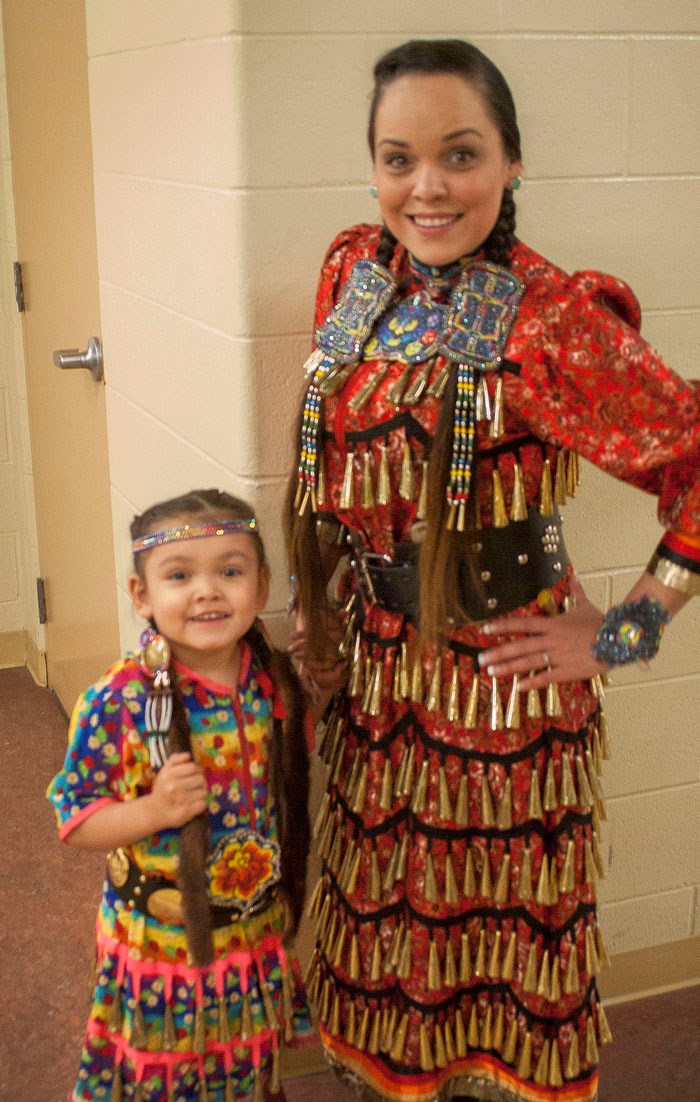With the 16th annual Painted Hand Casino Pow Wow in full swing over the weekend, many dancers, spectators, singers and drum groups from all over North America gathered together in celebration. Natasha Agecoutay and her three year old daughter, Tayjah Agecoutay made their way from Regina to participate in the traditional dancing portion of the event, clad in traditional healing attire.
To understand the significance of aboriginal dancing, one must understand the importance of the powwow. The North American powwow is a time-honoured method of renewing old friendships, creating new friendships, preserving aboriginal culture and celebrating inter-tribal heritage. Dancing is an integral part of powwows, and is as diverse as the many different tribes that attend them. Dances are an expression of history; a story told by the movement of the body. They range from religious rituals, to war to social celebrations.
Agecoutay and her young daughter have been attending powwows and dancing since Tayjah was eight months old. Instructed as her elders once taught her, Agecoutay is passing down the tradition of the old-style healing dance.
The significance of this dance is to recognize the injustices the culture, as a whole, has faced, as well as to provide solace. The focus is more on healing the people, rather than curing disease or injustice. Adorned in bells, the dress used for the healing dance is called the “Jingle Dress,” and can hold up to 320 bells. For young dancers, such as Tayjah, their healing dresses contain an average of 40.
As the many bells ring out during dance, the sound resonates in the listener’s ear, bringing about healing. The singing during this dance tells the story of the injustice, and the drums beat methodically for all heartbeats in the room to beat as one, symbolizing that injustice affects all, and that healing is meant for all.
“I try to come to the powwow as much as I can since my fiancé sings. It works well for us to come as a family as well as a culture,” Agecoutay explains. “Our elders have told us to teach our children the culture, to be exposed to it as much as possible for preservation. Our history is a part of our identity – my identity - as a First Nations woman. I am trying to instill this within my daughter by bringing her to these events.”
Identity is an important aspect of Native American culture, and is evident through the celebrations and gatherings, such as powwows, that bring their stories to life. Since these gatherings also celebrate friendship, all are welcome to attend. Across races and across cultures, all are welcome to learn. In the colours of a feather, in the power of a voice, in the beat of the drum and through the jingle of a dress, the aboriginal culture will be preserved.




